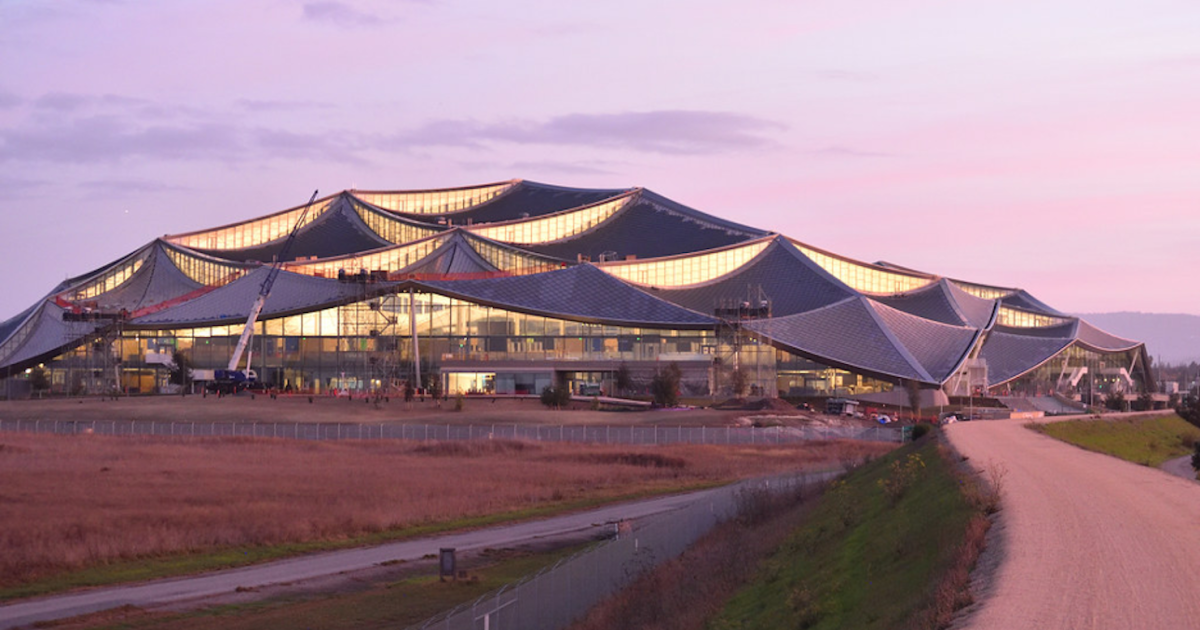Amazon, Google and Harvard demonstrate the value created by regenerative buildings

Established by the International Living Future Institute (ILFI) in 2006, the Living Building Challenge (LBC), the preeminent certification program for “regenerative” buildings, covers seven building performance areas including the typical issues of energy and water with more pioneering areas such as health, happiness and beauty.
Today there are 180 LBC certified buildings in the world. Three of the largest were featured at the Living Future conference, in Atlanta in May. Amazon’s Climate Pledge Arena, Google’s Bay View and Gradient Campus, and the Science and Engineering Campus at Harvard University all provide living embodiments of each organization’s values.
Regenerative buildings improve “the health and resilience of economies, cultures, and people,” according to the ILFI. The Challenge’s net-positive carbon requirement, for example, prohibits the use of combustion equipment and requires buildings to supply 105 percent of the energy they consume from on-site renewable energy.
Amazon attracts eco-minded artists to Climate Pledge Arena
In June 2020 Amazon bought the naming rights to Seattle’s arena, home of the NHL’s Kraken and the WNBA Storm. The company renamed the building the Climate Pledge Arena to celebrate the commitment made by over 500 companies, to date, to achieve net-zero carbon emissions by 2040.
“The arena had to live up to its namesake,” said Chris Roe, Amazon’s director of worldwide carbon. It’s the first arena in the world to achieve ILFI’s zero carbon certification. Its all-electric building systems (including the ice-cleaning zamboni) are completely powered by onsite solar or offset by purchased and retired renewable energy credits. Embodied carbon emissions were reduced by preserving the 44-million-pound roof during the arena renovation, with the remaining emissions offset by carbon credits.
Eco-conscious performers such as Coldplay have chosen to appear at the Climate Pledge Arena, helping Amazon, the arena’s development team, Oak View Group, the Seattle Kraken and the city of Seattle realize the full financial value of the project. Attracting artists to perform at the arena did not factor into the project team’s original total cost-of-ownership calculations relative to the initial design and renovation costs. “The boundaries of the benefits I think were too limited,” said Roe, “this experience gave us a broader imagination for the actual value of building this way.”
Google advances innovation at the Bay View and Gradient Canopy campus
Google led the development of the Bay View and Gradient Canopy campus from concept through construction with the innovative spirit that has driven the company since its 1998 founding. “The typical way of designing buildings just wasn’t going to work for Google,” said Michelle Kaufmann, director of R&D for the built environment.
Google’s approach included prototyping and testing new ideas throughout the design process, instead of waiting until the start of construction as most building projects do.
The result, in Silicon Valley, is a 1.1 million square foot all-electric building that meets the LBC’s definition of net water-positive – i.e., all of its non-potable water comes from water reused on-site.
The building’s roof is coated with a first-of-its-kind building integrated photovoltaic (BIPV) system that can be installed on curved surfaces. In typical Google fashion, the company coined a term for this innovation: “dragonscale.”
The project helped incubate BIPV and other new technologies. “A huge driver for us was the learnings that we would get,” said Kate Turpin, Google’s director of design performance and real estate and workplace services, “and then how we could leverage those and apply them to our larger portfolio.”
Harvard connects academic and industry progress at its Science and Engineering Complex
The new 550,000-square-foot Science and Engineering Complex, at Harvard’s Cambridge, Massachusetts campus, features the world’s first hydroformed stainless-steel screen facade, optimizes sunlight and natural warmth entering the building. Harvard also complied with the Living Building Challenge Red List — avoiding a list of chemicals commonly found in building products that harm human health and the environment.
In order to meet this standard, the university reviewed over 6,000 materials. As a result, some manufacturers removed harmful materials from their products, such as hexavalent chromium, made infamous by the Erin Brockovich lawsuit.
“Not only did they do it for this project, but they have actually taken it out of all of their products,” said Heather Hendrickson, Harvard’s chief sustainability officer. “We have over 200 success stories” like this, she added, showing Harvard faculty that “their research could actually catalyze real world action.”
Don’t let ‘nos’ go to waste
The panelists who presented these projects at the Living Future Conference openly acknowledged the challenges of taking on this level of ambition for a building (it is called the Living Building Challenge, after all). “It’s a no, no, yes sort of mentality that we have to bring, which requires endurance,” said Roe. “Please don’t let those ‘nos’ go to waste.”
The post "Amazon, Google and Harvard demonstrate the value created by regenerative buildings" appeared first on Trellis

